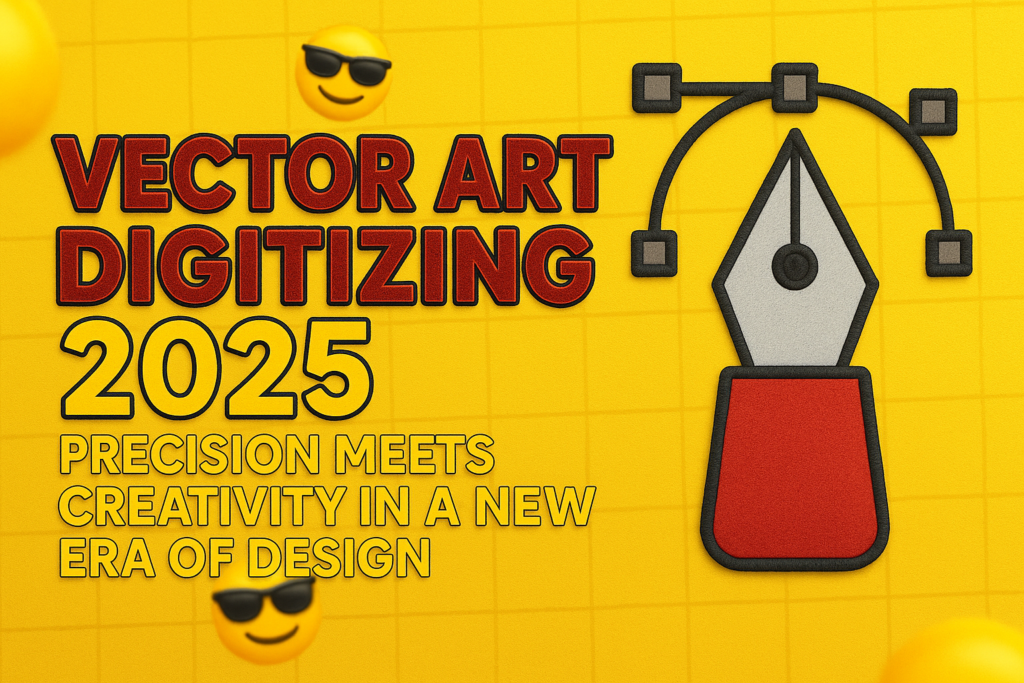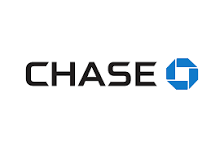As we move deeper into 2025, the creative world is being shaped by sharper tools, smarter software, and faster workflows. Yet, one art form remains foundational across industries—from screen printing and sublimation to signage and apparel decoration: vector art digitizing.
Vector art digitizing has quietly become the unsung hero of modern design. It’s what allows a rough sketch to become a crisp logo on a T-shirt, a complex illustration to shine on a banner, or a brand identity to stay sharp across every surface. And this year, the craft is not just surviving—it’s thriving.
What Is Vector Art Digitizing?
At its core, vector art digitizing is the process of converting raster images (like JPGs or PNGs) into scalable, editable vector formats. Unlike raster images, which are made of pixels, vector graphics are based on paths, curves, and points. This means they can be resized indefinitely without losing clarity.
Why is that important? Because whether you’re printing a logo on a pen or a billboard, you need it to look perfect—no blur, no pixelation, no guesswork. Vector files like AI, SVG, EPS, and PDF ensure exactly that.
But vector art digitizing isn’t just pushing buttons in Illustrator. It’s a skill. It requires attention to detail, a deep understanding of line work and proportions, and the ability to simplify complex designs without losing their essence.
Vector vs. Raster: A Quick Refresher
To understand the value of vector art digitizing in 2025, let’s revisit the basic difference:
- Raster images are composed of pixels. They look great at a specific resolution but fall apart when stretched.
- Vector images are mathematical paths. They maintain crisp edges and are infinitely scalable.
If you’ve ever seen a blurry logo on a company website or a jagged print on a shirt, chances are someone used a raster file where a vector was needed.
That’s where vector digitizing steps in—transforming poor-quality or low-resolution images into clean, print-ready artwork.
Why Vector Art Digitizing Still Matters in 2025
In a world that seems dominated by AI-generated designs and ultra-high-resolution photography, you might wonder why vector art still holds so much weight. The answer is simple: versatility and control.
Vector files are the preferred format across multiple industries:
- Apparel printing (screen print, DTF, sublimation)
- Embroidery (as source files before digitizing into stitches)
- Laser engraving and vinyl cutting
- Large-format printing
- Web and brand design
- Promotional merchandise
No matter how advanced technology becomes, clean, editable art is always the foundation. And in 2025, with brands demanding more from their visuals—more consistency, more detail, more scalability—vector art is more relevant than ever.
The Evolution of Vector Digitizing Tools
The tools used for vector digitizing have come a long way. Adobe Illustrator continues to be the industry standard, but software like CorelDRAW, Affinity Designer, and Inkscape are gaining ground thanks to their improved AI assistance, intuitive interfaces, and support for multiple file types.
In 2025, these tools are smarter than ever. New features powered by machine learning can:
- Auto-detect shapes and convert them to paths
- Simplify hand-drawn sketches into smooth vectors
- Detect overlapping paths and fix layering issues
- Auto-trace while preserving stroke weight and style
Still, even with these smart features, manual adjustments are crucial. That’s what separates a quick trace from a professional digitizing job. A human eye is still better at determining visual balance, symmetry, and artistic intent.
The Art in the Digitizing Process
Digitizing vector art isn’t a one-click solution—it’s a craft.
Here’s what typically happens during a vector conversion:
- Importing the original artwork – Often a low-resolution logo, photo, or sketch.
- Tracing or rebuilding the design – Using pen tools or shape tools to recreate each element from scratch.
- Cleaning and simplifying – Removing unnecessary anchor points, fixing overlaps, and optimizing curves.
- Color matching and layering – Ensuring the design uses solid fills and clean strokes, with consistent layering for print separation.
- Output formatting – Exporting to the necessary file types for the intended application.
Each step requires decisions that impact the final output. Is the logo symmetrical? Should gradients be flattened into spot colors? Are fine lines printable at small sizes?
Digitizers must think like designers and technicians at the same time—balancing beauty and function.
Where Creativity Meets Utility
In 2025, the expectations from vector digitizing aren’t just technical—they’re creative. Clients want logos that are not only functional but feel alive. They want hand-lettered typography turned into usable vectors without losing their charm. They want illustrations cleaned up but still organic.
This is where true vector artists shine. The best digitizers can keep the soul of a design intact, even as they polish it into something sharp and usable.
In fashion, this means turning a doodle into a bold back print for a T-shirt. In branding, it means ensuring a logo can look good on both a business card and a billboard. In events and sports, it means converting mascot sketches into wearable, print-ready symbols of team pride.
Common Challenges in Vector Art Digitizing
Like any craft, vector digitizing comes with its challenges:
- Low-quality source images: Often, the original artwork is blurry or tiny. Rebuilding it accurately requires both skill and patience.
- Overly complex designs: Not all artwork translates well into vector—especially highly detailed images or gradients.
- Poor auto-trace results: Auto-tracing tools save time but can create messy paths and jagged lines if not cleaned manually.
- File compatibility issues: Different industries use different file formats, and a file that works for a screen printer might not work for a laser engraver.
These challenges reinforce why skilled digitizers are still essential. They know how to reimagine designs without compromising their intent and can format files for any application.
Looking Ahead: The Future of Vector Art Digitizing
As AI and automation continue to transform creative industries, the question arises: Will vector art digitizing become fully automated?
To a degree, yes. Software will continue to get smarter at converting images, detecting curves, and cleaning lines. But the human element—taste, judgment, style—remains irreplaceable.
What will change is how fast and flexible the process becomes. Imagine a future where:
- A designer sketches on a tablet, and it’s instantly vectorized with suggested styles
- Color separations and size scaling are handled in seconds
- AI detects brand colors and fonts to auto-match designs to brand guidelines
But even in that future, a human still needs to approve, adjust, and refine. Vector digitizing in 2025 is less about replacing people and more about enhancing their speed and creative power.
Conclusion: Why Vector Digitizing Is Still an Artist’s Playground
Vector art digitizing may sound technical, but at its heart, it’s a form of craftsmanship. It’s where the logical and the creative meet—where clean geometry brings ideas to life.
In 2025, the need for sharp, scalable, and versatile designs has never been higher. And that makes the role of vector artists more vital than ever. Whether you’re a designer, printer, merch creator, or just someone who appreciates clean visuals, vector digitizing is what ensures the design doesn’t just look good—but works everywhere it goes.
Because in the end, great design doesn’t live in just one size or space—it lives everywhere. And vector art is what makes that possible.







